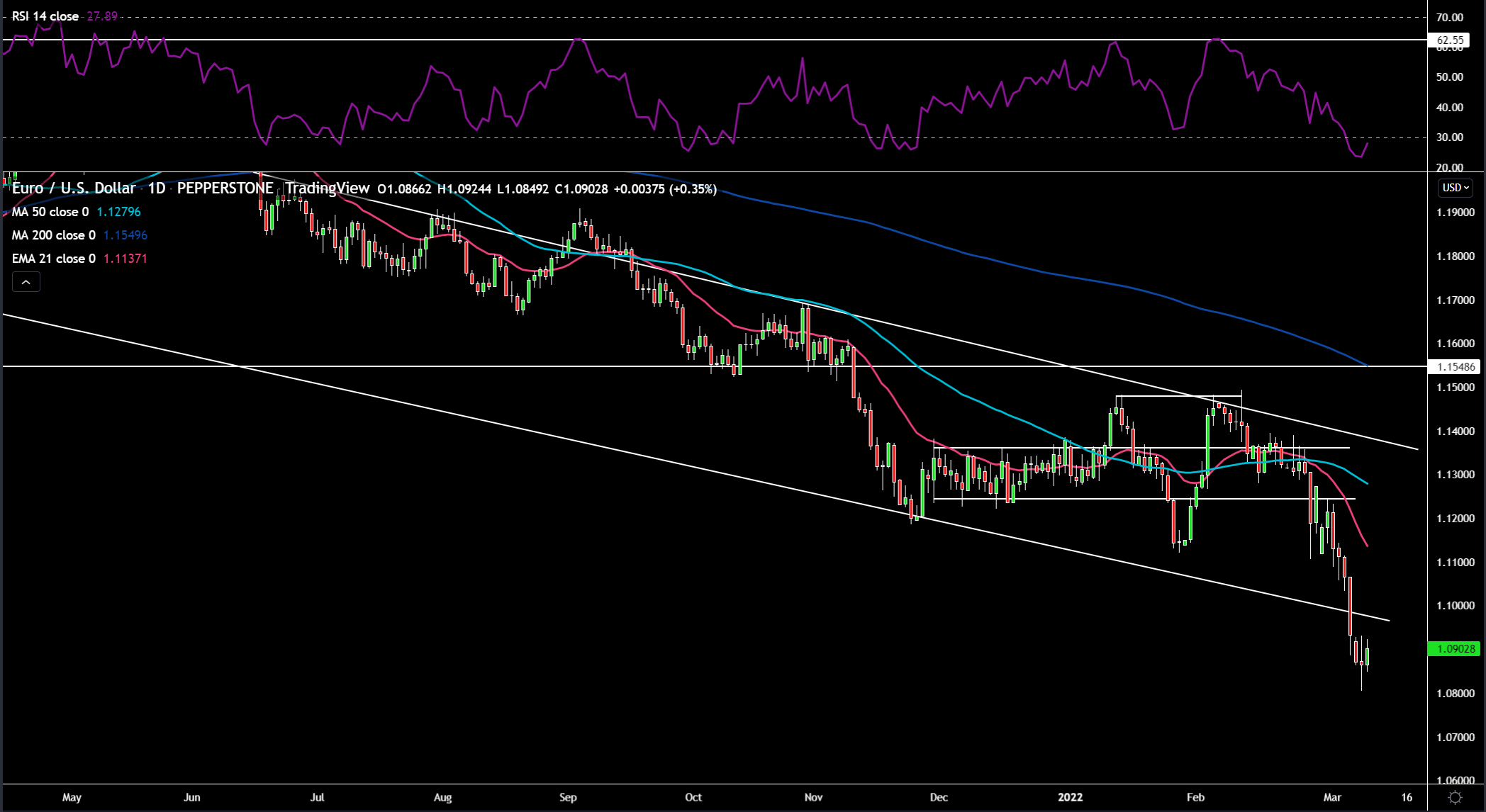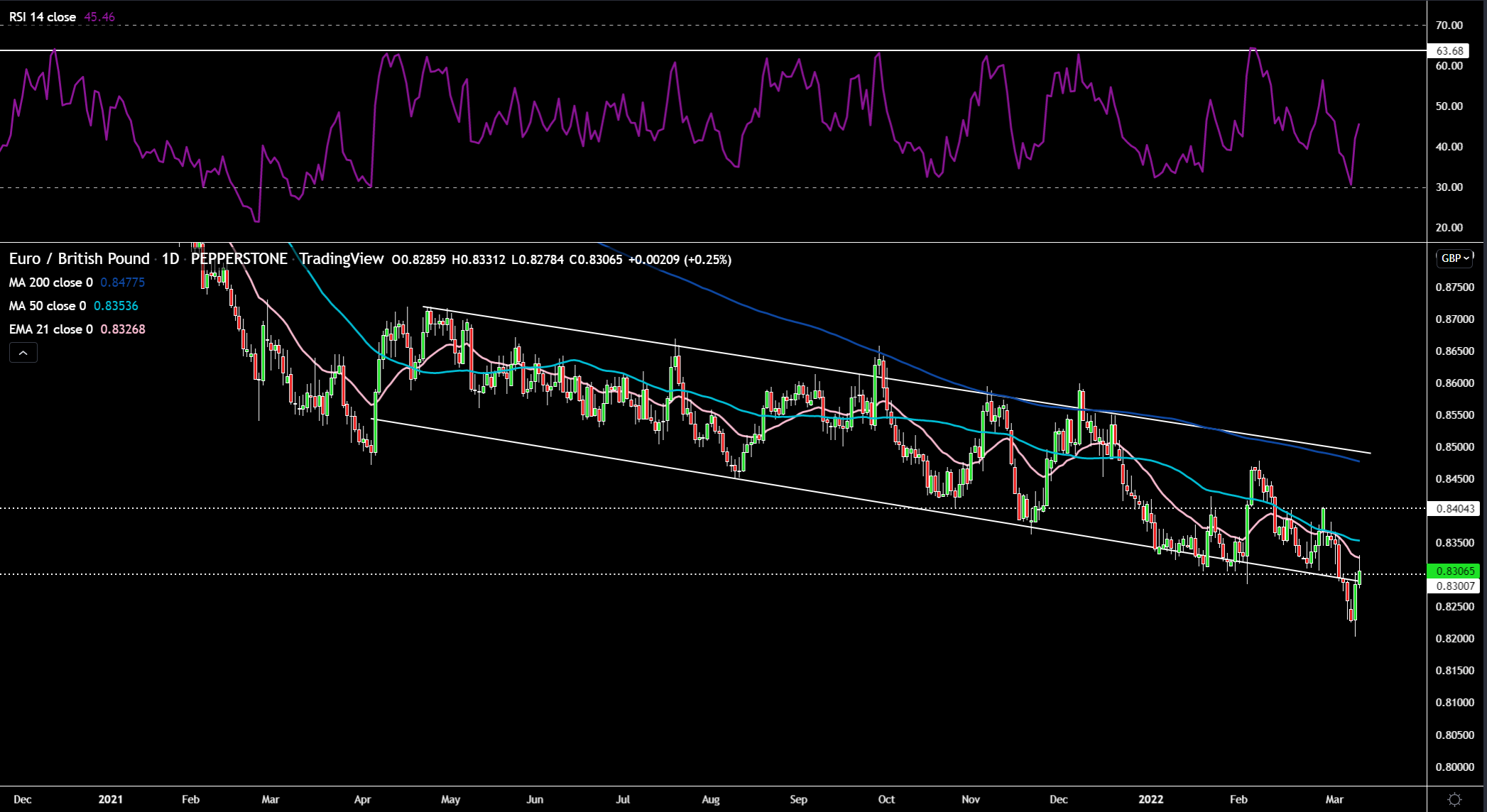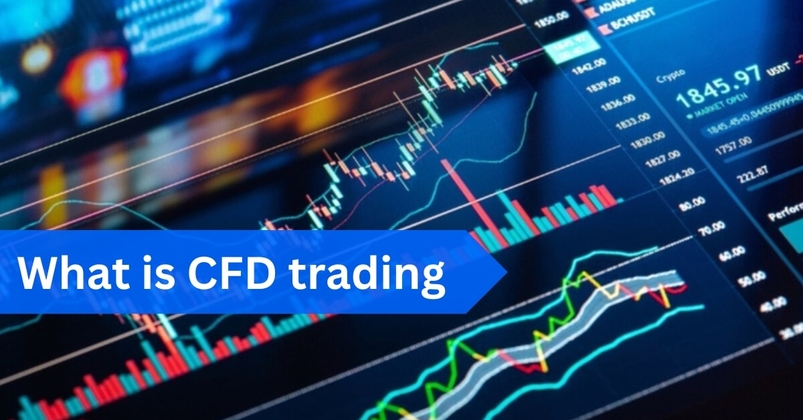- English
- Italiano
- Español
- Français
The ECB find themselves in a difficult spot as they try to navigate a stagflationary shock. Prior to the war, the market was expecting a shift towards policy normalization (tapering APP to allow for an earlier start to rate hikes) based on the December meeting and recent rhetoric from Governing Council (GC) members. Although, I’m of the opinion these plans will very likely be delayed with recent developments - the direction of travel is still towards tighter policy in the medium term though. In this environment it's prudent to remain flexible and not pre-commit so they can act if an when the situation changes. The minutes from February show a broad consensus within the GC that inflation is becoming a problem and they cannot just remain on autopilot mode with policy.
The recent 5.8% (almost triple the ECB’s target) YoY headline inflation print would have done nothing to assuage those fears. There has however been a cooling in market pricing from the peak of circa 50bps into the end of this year. Now fluctuating either just above or below 25bps. I’d say currently, risks are tilted to the first hike being pushed back into 2023 on the basis of the growth shock being given primacy over the ECB’s price stability mandate (also they can’t do much with their policy tools for a supply shock). Wage pressures are also much less of a concern in the eurozone compared to the US and UK, given the higher unionization of the labour market where multi-year deals are agreed.
Forecasts wise, Chief Economist Lane informed markets that the cut-off period was modified to take account of the invasion’s effects on the eurozone’s growth and inflation profile. Growth will definitely be downgraded on the hit to consumer confidence (Eurozone Sentix Investor Confidence for March understandably took a massive hit), banks reducing loan growth on the increasing risks, higher energy prices and lower exports to Russia as sanctions bite. Despite the downward revision to the growth profile and consequently less demand, inflation will shoot up in 2022, more importantly where will those inflation forecasts sit for 2023 and 2024 – above 2%?
This will very much depend on the assumptions underpinning these forecasts – scarring from the invasion and energy future prices. It’s important to remember with such high uncertainty modelling errors will be more significant and occur more frequently (i.e. a wider probability cone). The other point to bear in mind is that even if the war ends tomorrow, diplomacy between Russia and the West has been severely damaged which could lead to sanctions not being removed for some time and hence energy prices and therefore inflation remaining higher for longer.
EURUSD:
3-month 25 delta risk reversals for EUR/USD show the biggest skew towards puts since the 2011 eurozone debt crisis. Weekly implied volatility is also significantly raised at 13.23% (168 pip move), which implies a 1 std dev upper bound and lower bound of 1.1096 and 1.0760 respectively. We’ve seen a bit of a bid into euro crosses this morning as news hit the wires that the EU are mulling a massive joint-bond sale to fund energy and defence. This throws something to the euro bulls as the mechanism sounds like the European recovery fund mark 2. Also, the hope that this could potentially lead to a more integrated fiscal union within the EU.

I still believe the euro remains a prime candidate for taking a short the rallies approach. The RSI is trying to move out of deeply oversold territory. 1.10 seems like the dividing line and would be a very interesting level to monitor, with a move above there potentially seeing further flows biased to the long side come through. The lower trend line of the descending channel will need to be overcome first. On the downside 1.08 would be key to stem further weakness.
EURGBP:
Another pair which has been very interesting. The 0.83 was properly breached with 0.82 being tagged. That is significant as we’ve never pushed this low below 0.83 since Brexit. Price has run into some resistance at the 21-day EMA with the 50-day SMA not far above at the 0.835 level. That would be key for bulls. On the downside another break of 0.83 could see us test the 0.82 level again.

Related articles
Ready to trade?
It's quick and easy to get started. Apply in minutes with our simple application process.
The material provided here has not been prepared in accordance with legal requirements designed to promote the independence of investment research and as such is considered to be a marketing communication. Whilst it is not subject to any prohibition on dealing ahead of the dissemination of investment research we will not seek to take any advantage before providing it to our clients.
Pepperstone doesn’t represent that the material provided here is accurate, current or complete, and therefore shouldn’t be relied upon as such. The information, whether from a third party or not, isn’t to be considered as a recommendation; or an offer to buy or sell; or the solicitation of an offer to buy or sell any security, financial product or instrument; or to participate in any particular trading strategy. It does not take into account readers’ financial situation or investment objectives. We advise any readers of this content to seek their own advice. Without the approval of Pepperstone, reproduction or redistribution of this information isn’t permitted.
.jpg)


